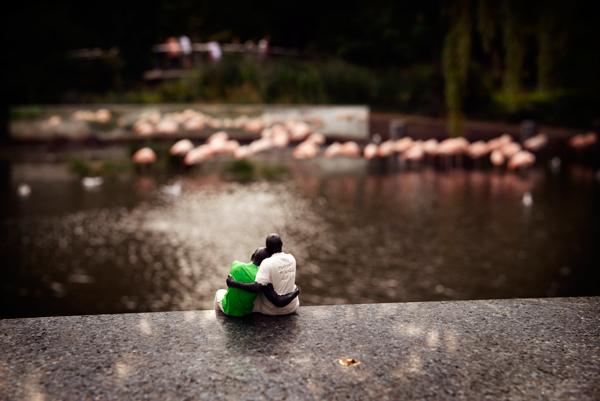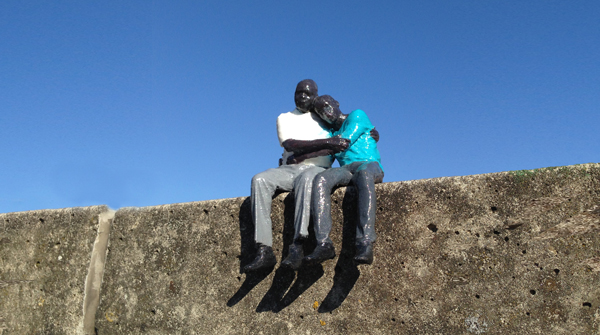Urban art is the great equalizer. With the rise of spray-painting and wheatpostering, the public is no longer forced to visit museums and see what rich white males call art. But one of the few mediums urban art cannot annex is sculpture; like museums, the field is dominated by the whims of the wealthy or the State: hideous office-park abstracts or courthouse Ten Commandment installations. Certainly there have been exceptions (Banksy’s pick-axed phone booth), but these are rare. And, unlike posters, sculptures are costly in both production and placement: as ephemeral as wheatposters, the sculptures are usually stolen or promptly removed. But the rise of cheap 3D printing opens the urban world beyond its walls and provides creative possibilities to a field that has become homogenized, and—as in the art world—boring.
Imagine if instead of Shepard Fairey spending the night plastering Andre The Giant Obey posters around LA (which is getting stale), Angelenos woke up to life-size Andre The Giant statues peppered around the city. Or suppose those untouched by the Syrian immigrant crisis were met, on their casual morning commutes, by thousands of refugees? Amsterdammers experienced just that—for the “Moving People” project, artists 3D-scanned 10 refugees from around the world, printed out thousands of 4-inch figurines, then scattered them throughout the Dutch capital.

3D-printed refugees, (father-son pair from Rwanda) sit on a wall in Amsterdam.
The “Moving People” project alludes to 3D-printing’s other urban art potential: copy and pasting. Few outside of Amsterdam have heard of “People,” but what if the scans were made available for anyone to 3D-print, and the immigrants appeared, simultaneously, in every major city? Consider Japanese artist Megumi Igarashi. She was arrested for tweeting out a photo of a seaworthy kayak based on a 3D-imaging of her vagina, and was then re-arrested for her protest-response, arraigned on charges of distribution of “obscene data” after posting the code allowing anyone to print their own copy of her vagina kayak.
This potential for scan and release moves beyond genitals. A San Francisco artist took photos of an undistinguished public sculpture—some soldier on some horse—plugged them into his computer, then printed out a “stolen” copy of the statue. (Copyright and value deserve another column: How will worth be calculated when anyone—not just those with the last name “Broad”—can display a Koons, and balloon dogs become as ubiquitous in college apartments as Klimt’s The Kiss?) But beyond proprietary rights, or maybe because of them, this kind of re-appropriation expands the urban artist’s palette. Presently, in the center of Disneyland, a statue of Walt motions out to his creation.
Now envision, just beside this, some urban artist’s replica—except this Walt, reflecting his history, raises his arm in a Hitler salute. Or with the printing of 3D houses now a reality, how soon until New Yorkers wake up one morning to a Statue of Liberty pointing with her torch for immigrants to go back to where they came from?
Or, at least, pointing for urban artists to return to their lofts and come up with something more unique than yet another wheatposter of a subversive Ronald McDonald.



















0 Comments